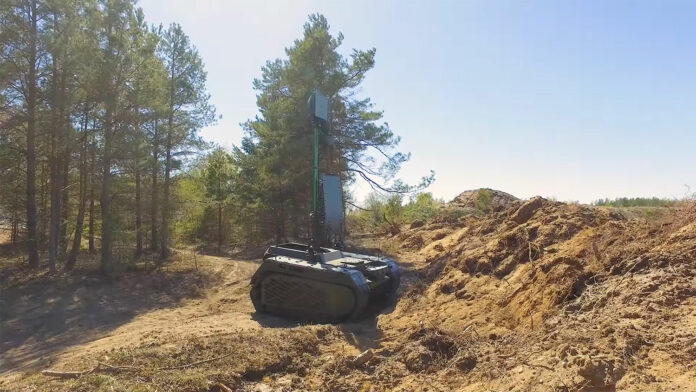Milrem Robotics, an Estonian robotic vehicle manufacturer, has rolled out its newly developed autonomous Intelligence, Surveillance, and Reconnaissance (ISR) unmanned ground system THeMIS Observe, as a part of the EU’s fourth iMUGS project demonstration in Belgium.
The THeMIS Observe is based on Milrem Robotics’ THeMIS UGV platform and is integrated with ISR equipment. The system includes the Z:Sparrowhawk camera from HENSOLDT, the Squire radar by Thales, Metravib Defence Pearl acoustic shot detection, the ROSY (Rapid Obscuring System) by Rheinmetall, and a mast by the Teksam Company NV. It can also be equipped with a light remote weapon station. The combination of those systems allows units to do multi-sensor identification on one platform and react faster on emerging targets.
In addition, the THeMIS Observe is equipped with Milrem’s Intelligent Functions Kit that enables autonomous functions such as follow-me and waypoint navigation with obstacle detection and avoidance.
The THeMIS UGVs are tracked vehicles, which means they can sneak almost anywhere, are powered by a hybrid diesel-electric drive, and can carry about 750 kg (1,650 pounds) of cargo.
“A UGV-based ISR system significantly increases a tactical unit’s reaction speed on targets as well as the stand-off distance from enemy units,” explained Cpt (res) Jüri Pajuste, Defence Research Director at Milrem Robotics. “Thanks to that, the capability and survivability of tactical reconnaissance units will increase considerably,” Pajuste said, adding that this type of capability is usually not available on one platform for light infantry units.
The autonomous ISR UGV will be demonstrated during the European Commission’s European Defence Industrial Development Programme (EDIDP) funded iMUGS project’s fourth demonstration in Belgium. The iMUGS project aims to develop a European standardized unmanned ground system (EUGS). During the project, modular and scalable architecture for hybrid manned-unmanned systems will be developed to standardize a European-wide ecosystem.
